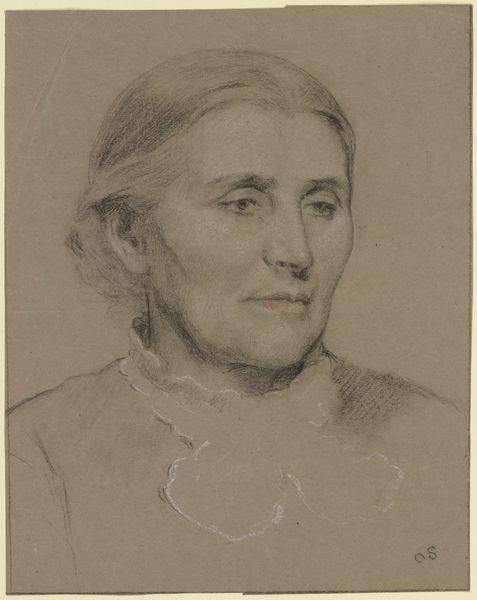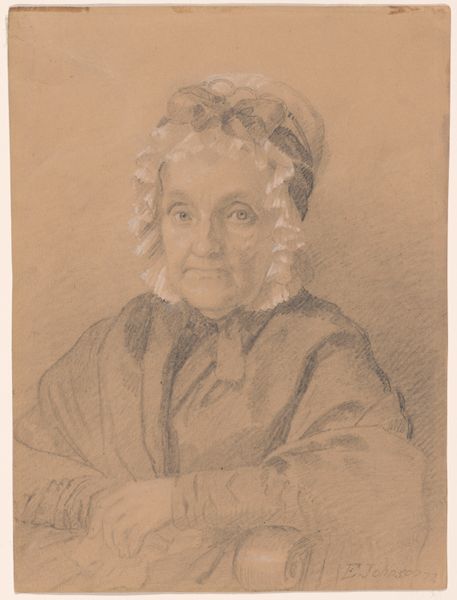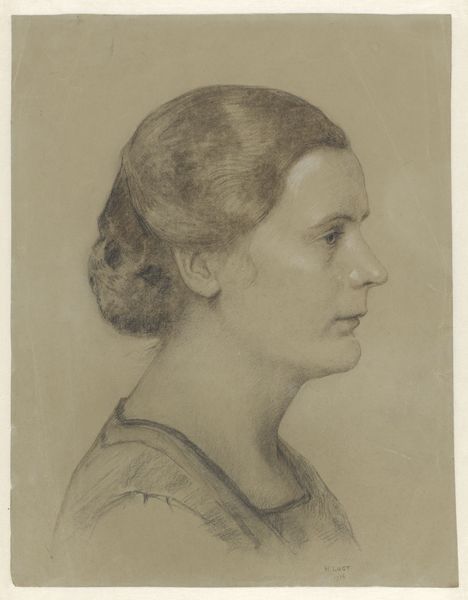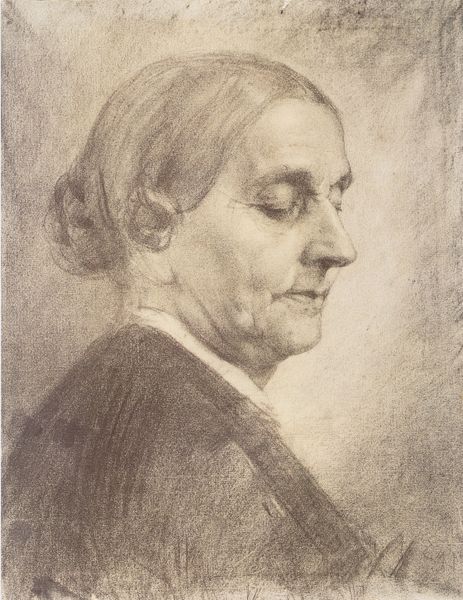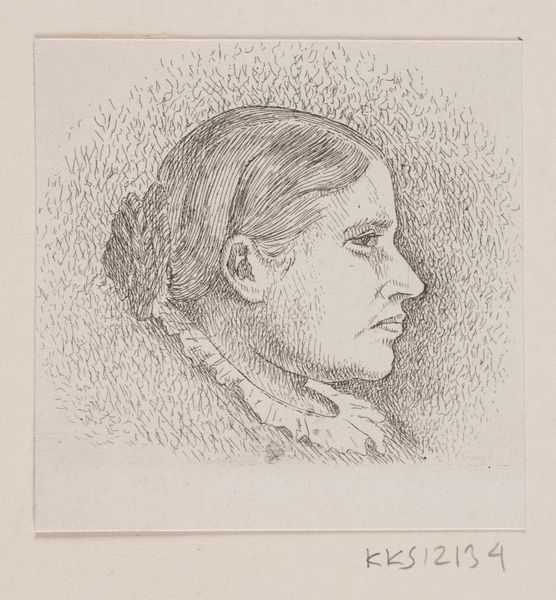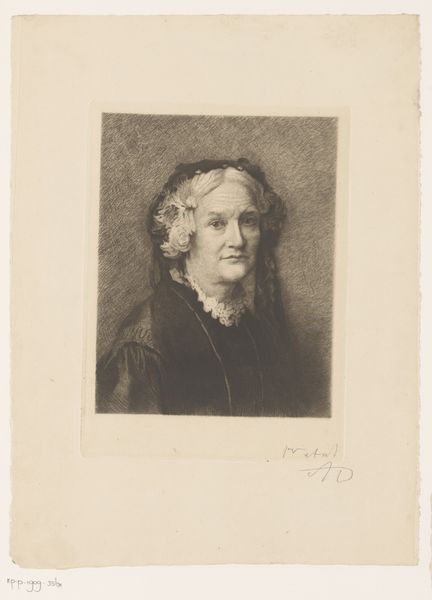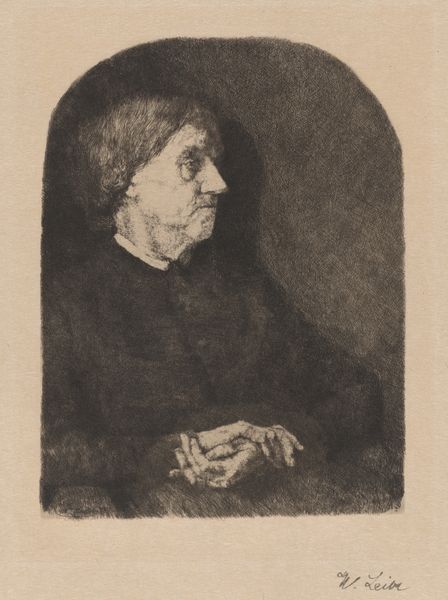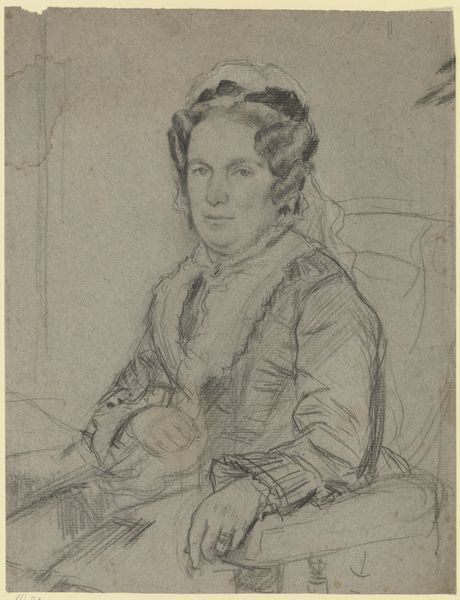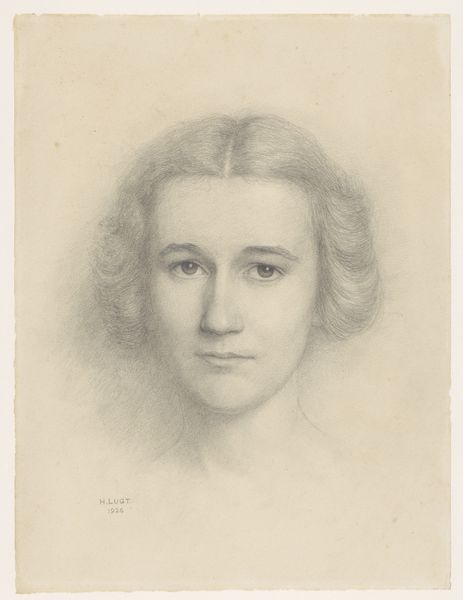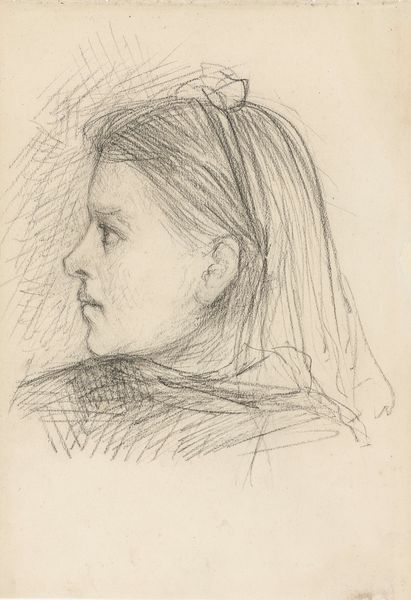
drawing, paper, pencil, chalk, graphite
#
portrait
#
drawing
#
paper
#
pencil
#
chalk
#
graphite
#
realism
Copyright: Public Domain
Curator: Look at the delicate detail in this drawing, "Bildnis einer älteren Dame nach rechts" by Otto Scholderer, currently held at the Städel Museum. Editor: The graphite and chalk create such a muted, almost melancholic atmosphere. It really brings forth a certain stillness. Curator: Indeed. Consider the materials he used. Chalk, graphite, and pencil all lend themselves to immediacy. This was, more than likely, a study of a face that caught Scholderer’s eye. Think of the skill involved in translating texture to paper: the softness of the skin, the weight of the hair pulled back. Editor: And what do we know about the context in which this image was created? Portraiture like this served a specific societal function, primarily recording status and lineage. Was it commissioned, or perhaps an intimate study? Curator: It’s unlikely it was commissioned, given the nature of the piece, and more of an interest in realism. What makes it so intriguing is the intimacy Scholderer creates. Notice the slight, almost imperceptible details around the eyes and mouth, conveying her age and experience, maybe. This was a period where artists broke from traditional forms of painting. Editor: So rather than portraying an idealized version of femininity, Scholderer chose to focus on the physical manifestations of aging? The implications are pretty potent in relation to the broader political sphere. Curator: Precisely. And from my perspective, looking at this drawing underscores the accessibility and portability of works on paper in this era. It highlights artistic labor removed from traditional notions of craft. Editor: Seeing it with you has certainly highlighted the various functions it embodies. The image carries an interesting narrative regarding both the socio-historical conditions of art and labor. Curator: Agreed; observing the drawing from different perspectives makes the artwork more significant and meaningful to me.
Comments
No comments
Be the first to comment and join the conversation on the ultimate creative platform.
